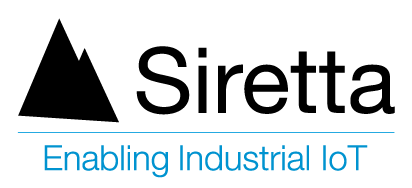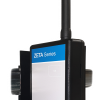To identify the ideal Industrial Cellular Modem for your application we have developed the Modem Selector Tool which is a configurable filter to narrow down the results to match your exact requirements.
4G refers to the fourth generation of cellular communication technology which superceeds the global system for mobile communications standard (GSM) and high speed packet access (HSPA) standards. It offers massive improvements in data throughput and reduced latency over 2G and 3G networks as it is entirely IP based. As 4G is IP based it no longer supports circuit switched network nodes and therefore the base stations only need to support IP traffic which means that all 4G voice traffic is sent over the IP infrastructure.
The LTE Cat 1 classification supports uplink data rates up to 5Mbps and downlink data rates up to 10Mbps which enable services such as POS terminals and digital signage for remote and reliable information display. LTE Cat 1 is commonly associated as a suitable equivalent to 3G / UMTS with regards to network speed and data throughput. Unlike 3G / UMTS it is possible to achieve these medium speed uplink and downlink data rates with LTE Cat 1 using a single antenna to achieve the data throughout. The LTE Cat 1 classification is compatible with the LTE Cat 4 classification on the same network and these categories can be used interchangeably with the higher LTE classifications obtaining higher data transfer rates.
As with 3G all of the benefits of the 2G and 3G system have been incorporated in to the 4G network to offer enhanced services with support for legacy applications such as SMS.
The 4G spectrum operates in a similar way to 2G and 3G with different regional areas being supported by different bands, however, the number of bands and regions compared to 2G and 3G is vastly different.
There are 44 defined bands for 4G and of these 13 bands are defined as Time Division Duplex (TDD) and 31 are defined as Frequency Division Duplex (FDD). The differences between these two standards is based around how they transmit and receive data using the shared spectrum.
TDD uses one frequency carrier to transmit and receive data over but the time for transmitting and receiving is different. With FDD two different frequencies are used to transmit and receive data but the data can be sent at the same time.

4G has a higher cost position compared to 2G and 3G but this cost is coming down as 4G / LTE technology is becoming more widely used across the world. The 4G network is split in to a number of classifications which define the mode of operation (TDD or FDD), the frequency band, the speed of operation and the number of MIMO layers. This can be seen in the table opposite.
As the IoT market does not necessarily require high data rates, the enhancements that are brought with the 4G network are normally not needed and as a result 2G has remained the favoured solution for IoT equipment developers. As with 3G a signifiant improvement offered by the 4G network over the 2G network is the network connection latency between two endpoints. This improvement means that the first byte will be received at the destination much more quickly and this means that the entire system latency will reduce. This opens the door for more real time, safety critical applications and allows for a much faster response times when sending and receiving information accross the network.
Unlike 2G and 3G networks, the 4G network is being invested in heavily to provide more global coverage as well as further development of the new 3GPP version releases. In addition to this investment is being provided for category M and categroy NB IoT which offer lower speed connections designed for direct 2G network replacement.
This table below shows the defined 4G classifications.
| User equipment Category | Downlink (Mbit/s) | Max. number of DL MIMO layers | Uplink (Mbit/s) | 3GPP Release |
| NB1 | 0.68 | 1 | 1 | Rel 13 |
| M1 | 1 | 1 | 1 | |
| 0 | 1 | 1 | 1 | Rel 12 |
| 1 | 10.3 | 1 | 5.2 | Rel 8 |
| 2 | 51 | 2 | 25.5 | |
| 3 | 102 | 2 | 51 | |
| 4 | 150.8 | 2 | 51 | |
| 5 | 299.6 | 4 | 75.4 | |
| 6 | 301.5 | 2 or 4 | 51 | Rel 10 |
| 7 | 301.5 | 2 or 4 | 102 | |
| 8 | 2,998.60 | 8 | 1,497.80 | |
| 9 | 452.2 | 2 or 4 | 51 | Rel 11 |
| 10 | 452.2 | 2 or 4 | 102 | |
| 11 | 603 | 2 or 4 | 51 | |
| 12 | 603 | 2 or 4 | 102 | |
| 13 | 391.7 | 2 or 4 | 150.8 | Rel 12 |
| 14 | 3,917 | 8 | 9,585 | |
| 15 | 750 | 2 or 4 | 226 | |
| 16 | 979 | 2 or 4 | n/a | |
| 17 | 25,065 | 8 | n/a | Rel 13 |
| 18 | 1174 | 2 or 4 or 8 | n/a | |
| 19 | 1566 | 2 or 4 or 8 | n/a |
Defined LTE bands and associated frequencies used within the 4G / LTE network.
| Band Number | LTE Mode | 4G LTE Common Name | Frequency (MHz) | Uplink (MHz) | Downlink (MHz) |
| 1 | FDD | IMT | 2100 | 1920 – 1980 | 2110 – 2170 |
| 2 | FDD | PCS blocks A-F | 1900 | 1850 – 1910 | 1930 – 1990 |
| 3 | FDD | DCS | 1800 | 1710 – 1785 | 1805 – 1880 |
| 4 | FDD | AWS blocks A-F (AWS-1) | 1700 | 1710 – 1755 | 2110 – 2155 |
| 5 | FDD | CLR | 850 | 824 – 849 | 869 – 894 |
| 7 | FDD | IMT-E | 2600 | 2500 – 2570 | 2620 – 2690 |
| 8 | FDD | E-GSM | 900 | 880 – 915 | 925 – 960 |
| 10 | FDD | Extended AWS blocks A-I | 1700 | 1710 – 1770 | 2110 – 2170 |
| 11 | FDD | Lower PDC | 1500 | 1427.9 – 1447.9 | 1475.9 – 1495.9 |
| 12 | FDD | Lower SMH blocks A/B/C | 700 | 699 – 716 | 729 – 746 |
| 13 | FDD | Upper SMH block C | 700 | 777 – 787 | 746 – 756 |
| 14 | FDD | Upper SMH block D | 700 | 788 – 798 | 758 – 768 |
| 17 | FDD | Lower SMH blocks B/C | 700 | 704 – 716 | 734 – 746 |
| 18 | FDD | Japan lower 800 | 850 | 815 – 830 | 860 – 875 |
| 19 | FDD | Japan upper 800 | 850 | 830 – 845 | 875 – 890 |
| 20 | FDD | EU Digital Dividend | 800 | 832 – 862 | 791 – 821 |
| 21 | FDD | Upper PDC | 1500 | 1447.9 – 1462.9 | 1495.9 – 1510.9 |
| 24 | FDD | L-Band (US) | 1600 | 1626.5 – 1660.5 | 1525 – 1559 |
| 25 | FDD | Extended PCS blocks A-G | 1900 | 1850 – 1915 | 1930 – 1995 |
| 26 | FDD | Extended CLR | 850 | 814 – 849 | 859 – 894 |
| 28 | FDD | APT | 700 | 703 – 748 | 758 – 803 |
| 29 | FDD | Lower SMH blocks D/E | 700 | N/A | 717 – 728 |
| 30 | FDD | WCS blocks A/B | 2300 | 2305 – 2315 | 2350 – 2360 |
| 32 | FDD | L-Band (EU) | 1500 | N/A | 1452 – 1496 |
| 33 | TDD | IMT | 2100 | 1900 – 1920 | |
| 34 | TDD | IMT | 2100 | 2010 – 2025 | |
| 35 | TDD | PCS (Uplink) | 1900 | 1850 – 1910 | |
| 36 | TDD | PCS (Downlink) | 1900 | 1930 – 1990 | |
| 37 | TDD | PCS (Duplex spacing) | 1900 | 1910 – 1930 | |
| 38 | TDD | IMT-E (Duplex Spacing) | 2600 | 2570 – 2620 | |
| 39 | TDD | DCS-IMT gap | 1900 | 1880 – 1920 | |
| 41 | TDD | BRS / EBS | 2500 | 2496 – 2690 | |
| 44 | TDD | APT | 700 | 703 – 803 | |
| 45 | TDD | L-Band (China) | 1500 | 1447 – 1467 | |
| 46 | TDD | U-NII | 5200 | 5150 – 5925 | |
| 47 | TDD | U-NII-4 (V2X) | 5900 | 5855 – 5925 | |
| 48 | TDD | CBRS | 3600 | 3550 – 3700 | |
| 65 | FDD | Extended IMT | 2100 | 1920 – 2010 | 2110 – 2200 |
| 66 | FDD | Extended AWS blocks A-J (AWS-1/AWS-3) | 1700 | 1710 – 1780 | 2110 – 2200[3] |
| 67 | FDD | EU 700 | 700 | N/A | 738 – 758 |
| 68 | FDD | ME 700 | 700 | 698 – 728 | 753 – 783 |
| 69 | FDD | IMT-E (Duplex spacing) | 2600 | N/A | 2570 – 2620 |
| 70 | FDD | AWS-4 | 2000 | 1695 – 1710 | 1995 – 2020 |
| 71 | FDD | US Digital Dividend | 600 | 663 – 698 | 617 – 652 |
LTE network split by LTE category and associated application examples.
| 1 Gbit/s | LTECat 4 | Aggregators / Distribution | ||
| 100 Mbit/s | Video Surveillance | Internet Hotspots | Infotainment | |
| 20 Mbit/s | IoT Gateways | Network Bridges | Server Backup | |
| 10 Mbit/s | LTECat 1 | Data Devices / Services | ||
| 5 Mbit/s | Digital Signage | Retail Kiosks | ATM | |
| 2 Mbit/s | Healthcare | Alarm Panels | POS Terminals | |
| 1 Mbit/s | LTECat M | Wearables / Meters | ||
| 250 Kbit/s | Personal Tracking | ANPR Monitoring | Telematics | |
| 100 Kbit/s | Smart Watches | Asset Tracking | AMR | |
| 10 Kbit/s | LTENB IoT | Sensors / Tagging | ||
| 5 Kbit/s | HVAC Control | Lighting | Pollution Moitoring | |
| 1 Kbit/s | Smoke Detectors | Livestock Tagging | Agriculture Monitoring | |


